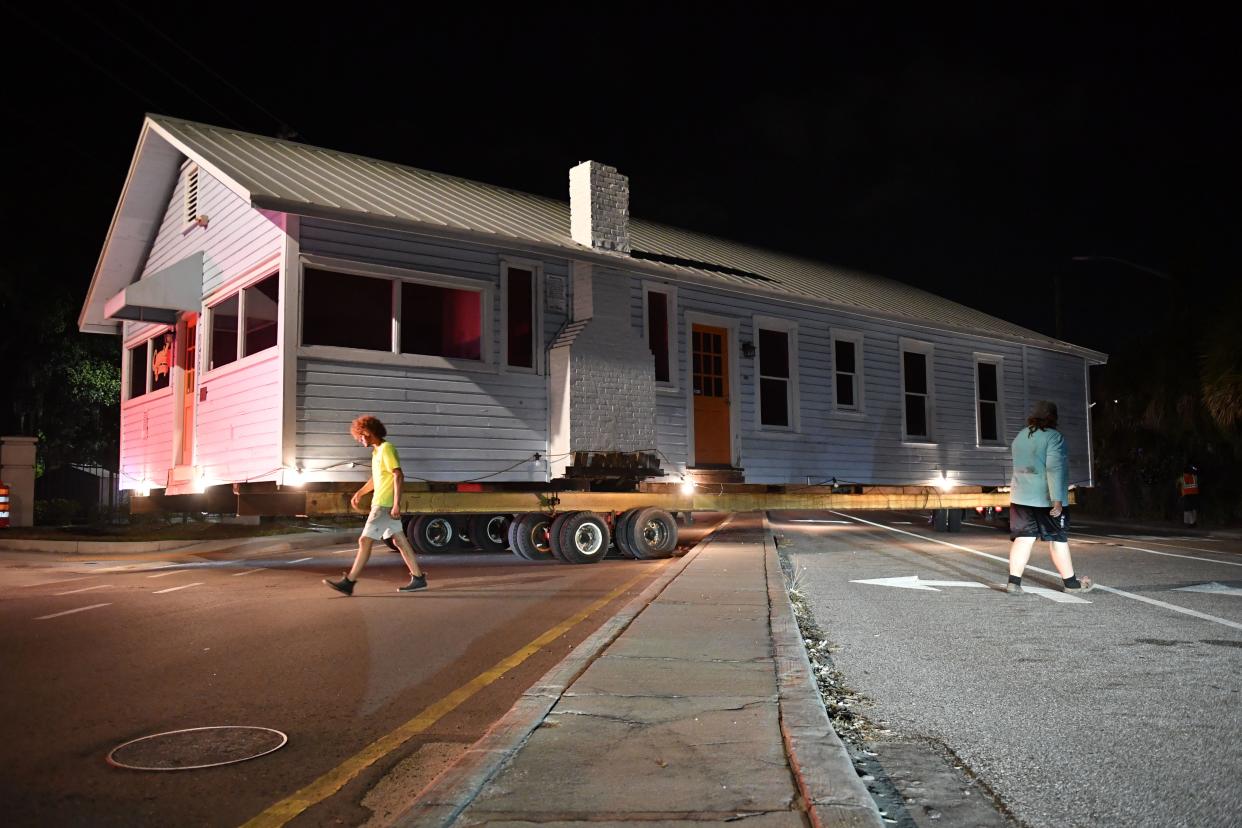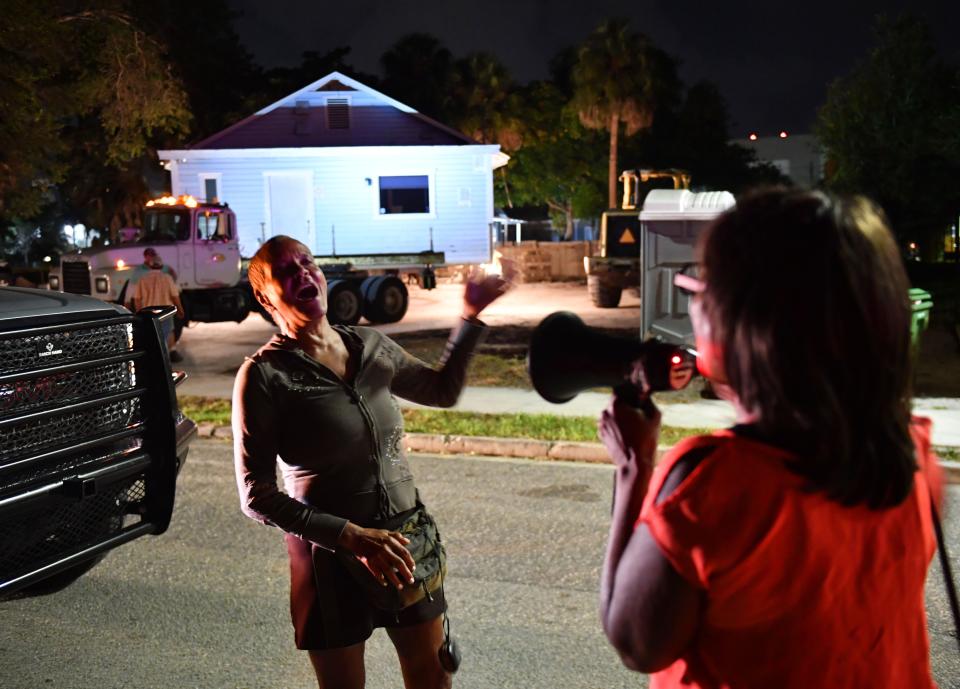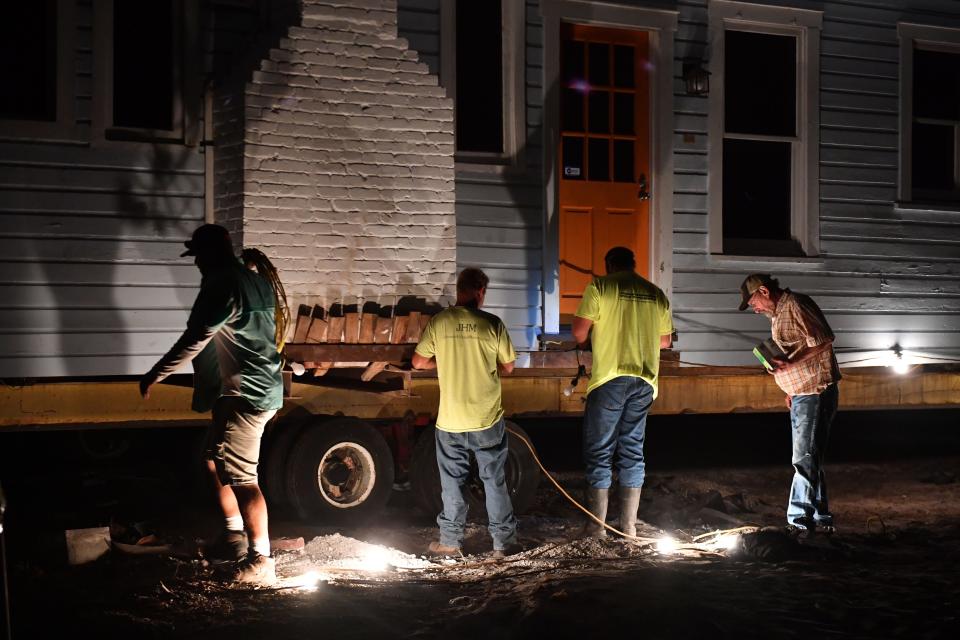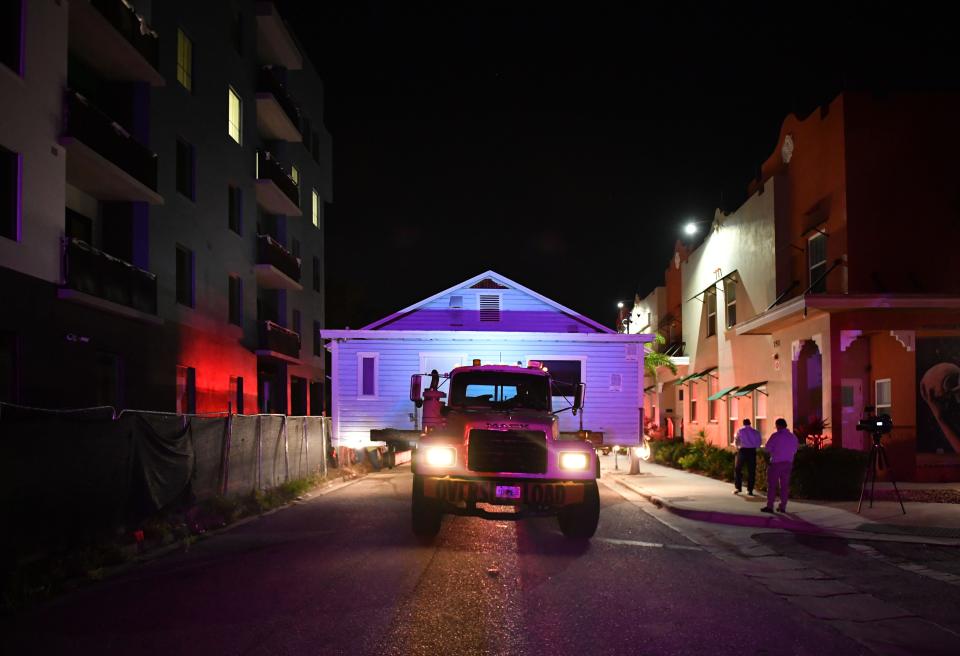Home of African American trailblazer Leonard Reid relocated to the heart of Newtown

SARASOTA – The history of Sarasota’s African American early settlers can be traced back to one name in the historic Overtown community, Leonard Reid.
The Reid home was built in 1926. The trailblazer’ single-story 1,400-square-foot home helped establish and anchor Sarasota’s first black community, Overtown, now known as the Rosemary District. Early Friday morning, the home was moved from its original location on 7th Street, taking a 1.5-mile ride via flatbed truck near downtown Sarasota into the heart of Newtown, the city’s predominantly Black neighborhood.
The pale blue home with a bright orange door arrived via police escort to its destination around 3 a.m. at 2529 N. Orange Ave., where it will be preserved at the corner of Dr. Martin Luther King Jr. Way.
The Reid home relocation marks the beginning of the Sarasota African American Cultural Coalition’s mission to preserve, showcase and educate people about the rich history of Sarasota’s Black pioneers and communities.
Previous: Sarasota African American Cultural Arts Center and History Museum in works
Read More: A coalition is teaching Sarasotans about African American history, as it waits to open a museum

A standing-room-only, open-air sendoff and cultural ceremony preceded the relocation on Thursday evening. Approximately 150 residents, dignitaries, and community leaders gathered beneath a live oak in “Black Bottom,” as it was called by its early residents, to learn the home’s history and about its respected original owner, Reid.
Reid, who became a Sarasota resident by chance after missing a scheduled boat ride to Cuba, where he had planned to begin working in the fishing industry, was lauded for his integrity, altruism and trailblazing during the lively ceremony.
Longtime Newtown resident Mary Mack shared stories of her childhood and memories of her time at the Reid family home.
“I visited this house when I was 6 years old with my grandmother. I want to honor my great Uncle Leonard Reid and his trust in God,” Mack said addressing the crowd. “I know we have come this far by faith. Had he (Reid) not missed that boat, we don’t know where we would be.”

Sarasota’s first African American mayor, Fredd Atkins, described life as he experienced it growing up in the Overtown historic community, citing the slope of the earth in four directions, the moisture that collected on the streets and walkways, and how the early Black settlers and residents fought to have a place to call their own against not only the environment but also the barriers that the community had to face to make Sarasota their home.
“You can’t build me a shack while you all build up palaces for everybody else. That’s why this is just the beginning of our prospects,” Atkins said.
Reid worked as the right-hand man of John Hamilton Gillespie, Sarasota’s first mayor. Reid was Gillespie’s coachman, butler, and the caretaker of his estate.
“Reid and his wife were a tremendous contribution to this community. ... You are standing in the heart of Black Bottom. This is where the mud was between your toes and a place where you took your shoes off if you wanted them to last past two weeks,” Atkins said.
“But it was alright because we learned how to survive, we took our shoes off and we walked to work to do the lumber yard and the concrete site and build houses all over this community. And we still got things to do, you know? If they can convert land into condominiums, if they forget the history, then we know they could easily erase us if we don’t remember,” he said.
SAACC President and CEO Vickie Oldham has headed the establishment of a physical space that will house all of the histories of the city’s Black residents. The city-owned property on which the Reid house will stay is the first piece of the puzzle in building a neighborhood cultural center, she said.
The cultural center and museum will be housed in the historic Leonard Reid House until construction of a new building is completed. City officials and SAACC have additional work to complete on the property in the coming months but expect all work to be done toward the end of the summer.

Samantha Gholar covers social justice news for the Herald-Tribune and USA TODAY Network. Connect with her at sgholar@gannett.com or on Twitter: @samanthagholar
This article originally appeared on Sarasota Herald-Tribune: Sarasota’s historic Reid House traveled via police escort to new site

